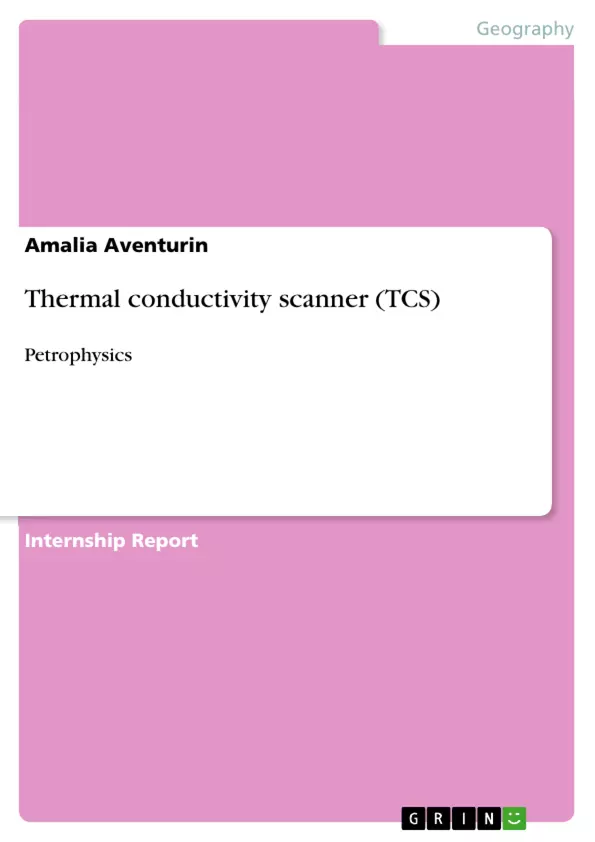The thermal conductivity scanner (or TCS) measures the thermal conductivity (W/m∙K) via optical scanning method. In Figure 1 is a picture of the measurement shown. The thermal conductivity is a material property. High values are used for cooling systems to transport heat away from the material in a short time (e.g. fringes); low values are used as insulators, e.g. thermos flasks. With this method the heater and the detectors where moved along the sample from the right to the left. A sensor measures within the moving first the “cold” conductivity of the sample. Than the heater follows and a last sensor measures after the heating of 25°C the conductivity of the sample again. Before and after the sample are two reference sources laid with a defined thermal conductivity. These reference sources are need for the sensor calibration, too. To avoid errors there has always to be a gap of a few centimeters between the reference blocks and the measured sample. For the measuring the samples and the reference sources have to be colored with a thick black line to avoid overheating and reflection by lighter samples. The opening has to be covered completely by the painted part of the sample. To control this was a mirror underneath the apparatus. [...]
Table of Contents
- I. Introduction: TCS Principle and Measurement Results
- II. Thermal conductivity and profiles
- III. Theory and Calculation Results
- III.1. Geometric Method
- III.2. Arithmetric Method
- III.3. Harmonic Method
- IV. Matrix thermal conductivity (Ama)
- V. Error calculation
- VI. Conclusion
- VII. References
Objectives and Key Themes
This laboratory course focuses on using a thermal conductivity scanner (TCS) to measure the thermal conductivity of various rock samples. It aims to explore the principles behind the TCS method and its application in determining the thermal conductivity of different materials.
- Thermal conductivity measurement using TCS
- Thermal conductivity profiles of different rock types
- Calculation methods for thermal conductivity
- Influence of mineral composition on thermal conductivity
- Analysis of inhomogeneities in rock samples
Chapter Summaries
- I. Introduction: TCS Principle and Measurement Results: This chapter introduces the TCS method for measuring thermal conductivity and describes the principles of operation. It also presents the rock samples used in the laboratory course and their properties.
- II. Thermal conductivity and profiles: This chapter examines the thermal conductivity profiles of the rock samples measured using the TCS. It discusses the influence of mineral composition and inhomogeneities on the thermal conductivity.
- III. Theory and Calculation Results: This chapter delves into the theoretical aspects of calculating thermal conductivity using various methods, including the Geometric Method, Arithmetric Method, and Harmonic Method.
- IV. Matrix thermal conductivity (Ama): This chapter focuses on determining the matrix thermal conductivity of the rock samples, which reflects the intrinsic conductivity of the rock matrix.
- V. Error calculation: This chapter explores the sources of error in thermal conductivity measurements and discusses methods for calculating and minimizing errors.
Keywords
This laboratory course explores the use of a thermal conductivity scanner (TCS), thermal conductivity profiles, various calculation methods, rock samples, mineral composition, inhomogeneities, error calculation, and matrix thermal conductivity. The focus is on understanding the thermal conductivity of different rock types using the TCS method.
- Citation du texte
- Amalia Aventurin (Auteur), 2013, Thermal conductivity scanner (TCS), Munich, GRIN Verlag, https://www.grin.com/document/272603



